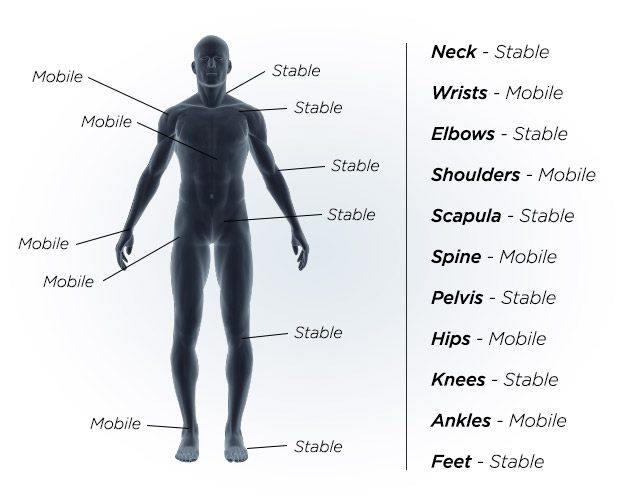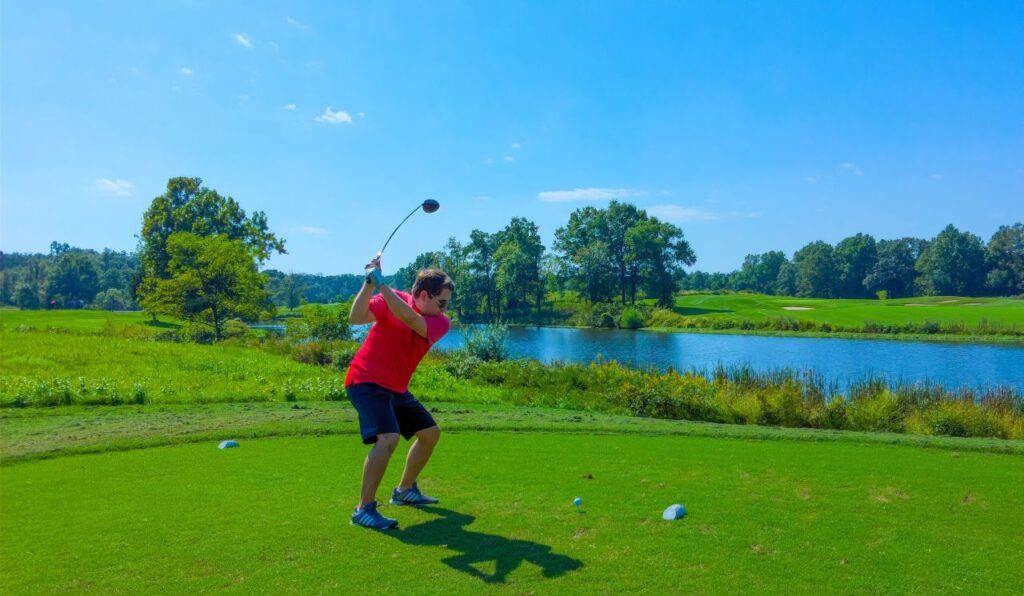Having a golf swing problem and not being able to correct it is the norm these days. Millions of golfers every year walk off the course in frustration. Many have a golf swing problem and have tried to fix it the “traditional way”.
What I mean is… going to an instructor who can very easily point out what you are or are not doing, but not necessarily getting to the root of the problem. So many times an instructor will tell the golfer “he’s coming over the top” and that’s why he’s slicing the ball.
Or maybe he’s got the “chicken wing” in his follow through. But what does all that mean if you can’t get to what’s the cause and effect of that golf swing problem?
Let me give you a specific example.
You have a hard time staying “in your posture” during your golf swing. You’ve taken many lessons and your golf instructor keeps telling you “your coming out of your swing”. But what good is that if you don’t know why this is happening?
I’ll give you one (of many) reasons why this could be happening!
Your hamstrings (the back of your upper leg) are too tight AND week! This is a fact with the majority of golfers, especially the senior golfers and those spend a lot of time at a desk.
Pro Tip: Nearly all hamstring problems are caused by weak or poor functioning glute muscles and the underlying sacro-iliac joints (SIJs).
Golf posture requires a bending at the hips, which puts a strain on the hamstrings and low back. If your hamstrings are tight and your glutes weak, they will send a message to your brain saying “I can’t hold this, get me out of this uncomfortable position”.

Does that make sense?
The other message your hamstrings might send is “I’m not strong enough to hold this position, I’m going bail out of this position”.
This is a very common cause of “coming out of your golf swing”.
But if you are not aware this is the cause, you will continue to take lessons and hear the same thing over and over again. You could have saved hundreds of dollars in lessons, just by stretching and strengthening your hamstrings specific to your golf posture.
This is just one of many examples of how your body is what’s causing the golf swing problem.
Once you take the approach that your body dictates your ability to swing correctly, you will be on your way to the best golf of your life.
You will soon not have to worry about a golf swing problem anymore.
So, what do you do next?
You need to get assessed by a golf swing mechanic. A physical therapist, a sports rehab practitioner, or similar, that has a passion for golf and experience working with golfer’s bodies.
That way you can zero into the exact underlying root cause of your swing fault and not waste time and money on addressing something that is not affecting your game.
Plus, they should be able to design a swing fault correction program specifically tailored to you, and that fits into your lifestyle and vocation.
Click “Take the Test” in the menu and take my quick test to see how you stack up.

Does your Golf Swing Stack up?
Your Golf Swing Stack (GSS) is a functional coupling of mobile platforms connected to and functioning off of stable joints that coordinate together to produce the fluid motion that should be your golf swing.
It’s what allows you to generate force from the ground, through your body, then shoulders and arms, and into your driver (or any other club). Like cracking a stock whip, or skipping a stone acroos water.
Your GSS is feet stable; ankles mobile; knees stable; hips mobile; low back stable; torso (thoracic spine) mobile; head and neck stable; shoulders mobile; arms stable; wrists mobile. (see image above)
Any restrction in the mobile segments will make it near impossible to swing your driver (or any other longer club) as you want and desire to.
It’s the interaction between these stable and mobile couplings that delivers the dynamic forces that produces the Centrifugal Rotational Whip – a whipping motion around a central axis so that the highest speed is at the ‘whip tip’, the club head, and the crack of the ‘whip’ is at contact with the ball.
Your golf swing begins at the foundation. No matter what you do in life; build a house, start a business, undertake a hobby, or compete in a sport or game, they all need a good foundation to start with.
Without a good foundation, or a good base of support, eventually the ‘walls’ will start to lean, the ‘floor’ begins to tilt, the ‘ceiling’ starts to crack, the roof ends up off kilter, and your ‘house’ is a mess.
Your foundation, your base of support, is critical. If you have issues with your floors, walls, ceiling and roof it is unwise to repair them first if they are caused by a foundation problem. They will only return if you don’t first fix the foundation.
So it is with your golf swing. If you have issues with a big slice, a duck hook, over the top, fatting, thinning, not getting the ball in the air, or just a lack of power and distance, FIRST check your shoulders, torso, pelvis, hips or ankles- your mobile segments
Nine times out of ten your swing outcomes are due to to a problem with the foundation and trying to fix swing faults without addressing body mobility, strength and fitness will lead to frustration continually.
Most programs that attempt to improve your golf swing, focus on strength first and mobility second but always of hips and shoulders. You can’t have strength, at least strength delivered in a meaningful way, without mobility.
The moral of this story is that any fault needs to be addressed as a function of the whole body and its relationship to your swing. And any correction to it should be functional and involve rotational assessments and exercises that we call GSETs (Golf Swing Enhancement Techniques).
Don’t forget to take the test

